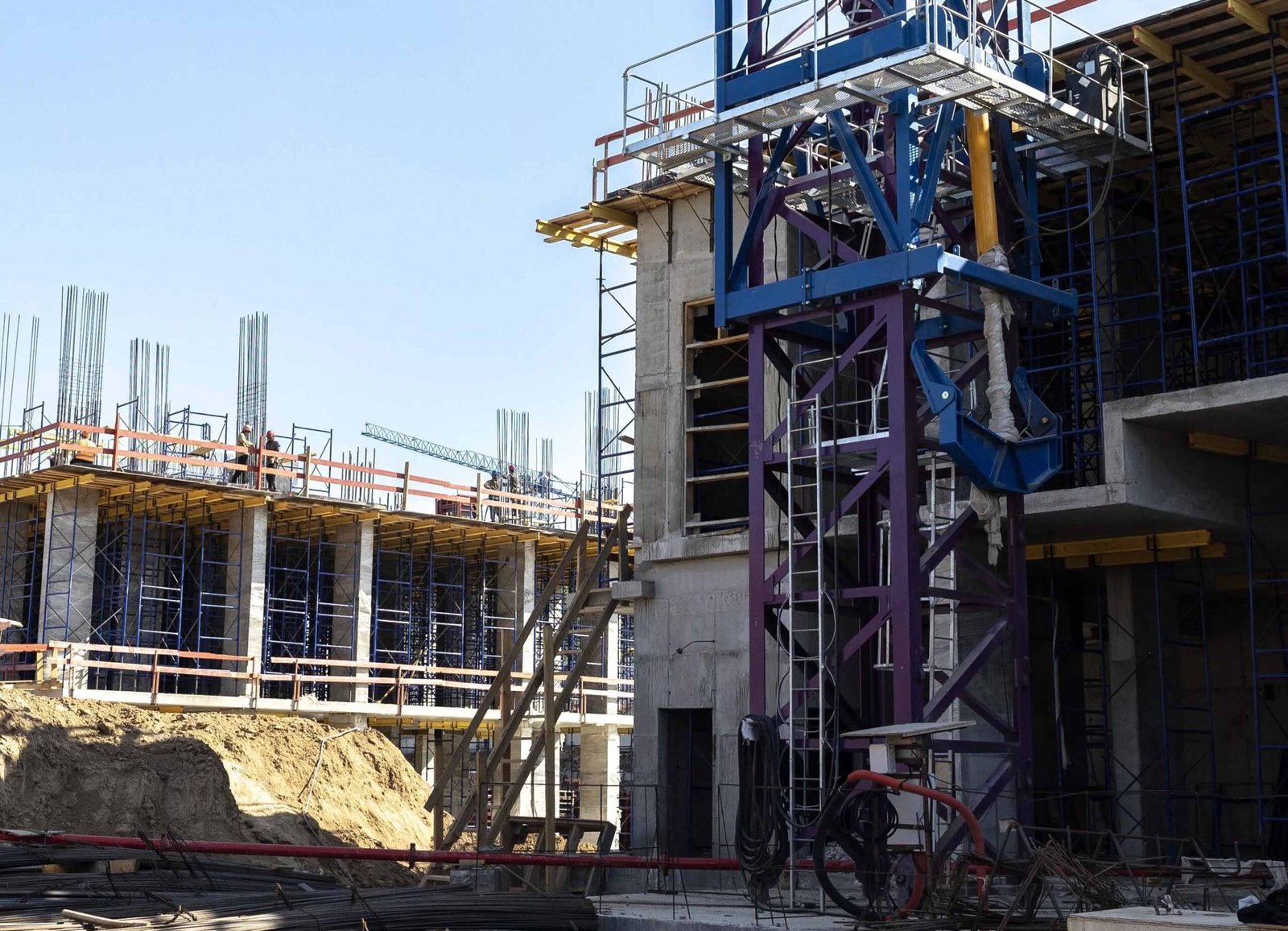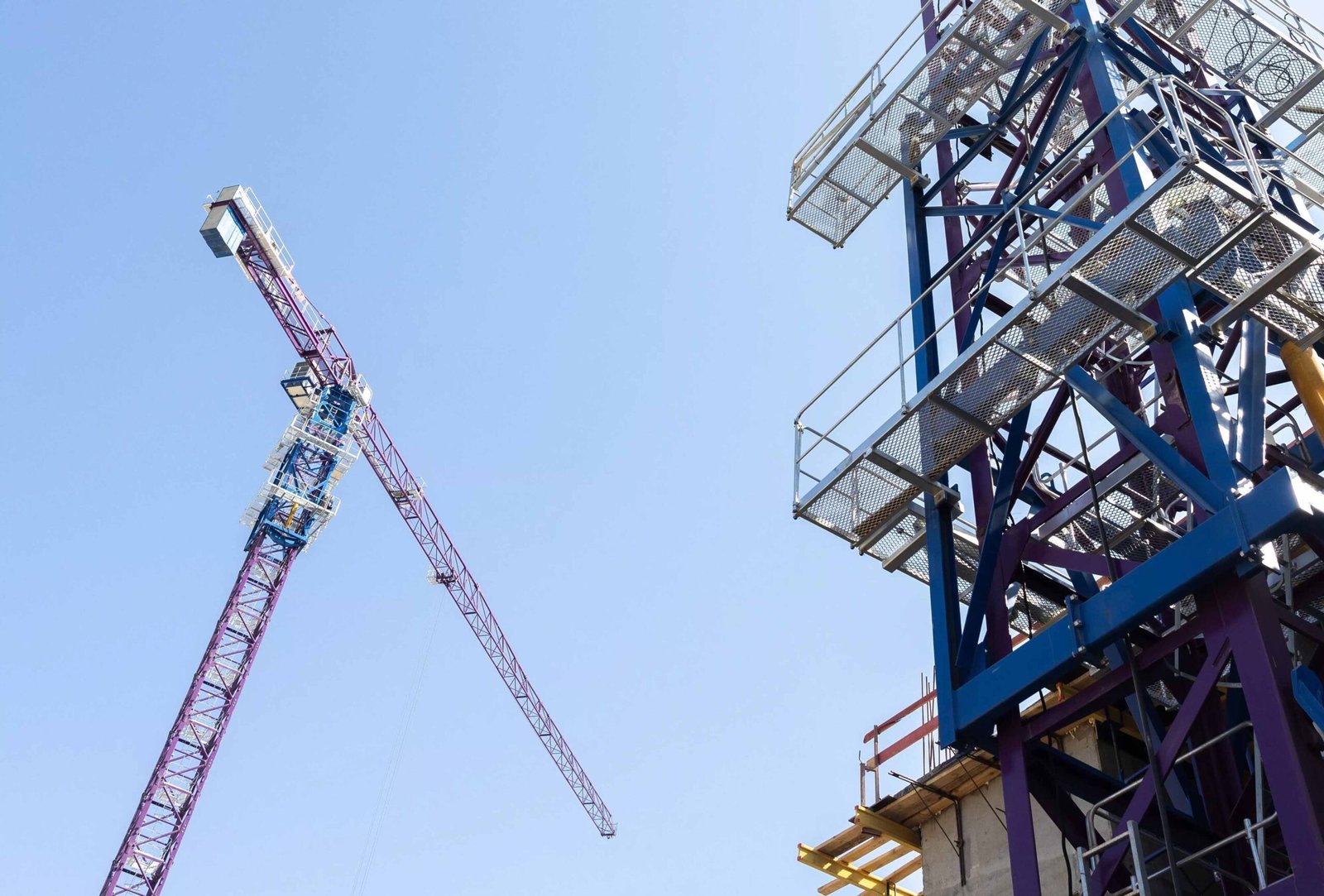
When you see a towering crane on a construction site, you might notice a long, horizontal arm extending from its top. This arm is called the boom1. Tower cranes are a vital part of modern construction, and the boom is a critical component that allows the crane to lift heavy loads high above the ground. But what exactly is a boom, and why is it so important? Let’s dive into its role and how it contributes to the crane's functionality.
The boom of a tower crane is the long horizontal arm that extends to lift heavy loads. It is essential for both reach and lifting capacity.
Now, let’s explore the boom in more detail and understand its structure, function, and importance in crane operations.
What is a boom on a crane?

The boom of a crane refers to the long, horizontal arm that extends outward from the tower structure. It is the primary lifting mechanism of the crane and is responsible for extending the reach of the crane to lift loads over large distances.
Key Functions of a Boom in Tower Cranes
-
Reach and Height
The boom is designed to reach significant heights and distances, allowing the crane to lift materials, equipment, or loads from the ground to high places like the upper floors of a building. The length of the boom directly influences how far the crane can lift its loads horizontally. -
Load Support
The boom carries the lifting load and is attached to the tower via a rotating mechanism. The crane’s hoisting system is connected to the boom, allowing it to raise, lower, and move the load as required for construction. -
Flexibility and Adjustment
In some cranes, the boom can be adjusted, either raised or lowered, to change the angle and reach. This flexibility allows the crane to handle a wide variety of tasks in construction, from lifting heavy materials to positioning equipment. -
Strength and Safety
Booms are designed to be strong and capable of bearing heavy loads while maintaining stability. They are made from high-strength materials, often steel, to ensure that they can handle the extreme forces generated during lifting operations.
Structure of the Boom
The boom is typically composed of sections that can be extended or retracted depending on the crane’s design. Some tower cranes have a fixed boom, while others feature a lattice boom2—a lattice-like structure that provides strength while being lighter and more flexible. The design of the boom is critical because it must support the lifting operation while minimizing the crane’s weight and maximizing its reach.
What is a boom in engineering?

In engineering, the term boom can refer to any long, extending arm or structure used to move, support, or lift heavy materials. A boom is an essential component in various types of machinery, from cranes to dredges, and even in certain ships. However, in the context of tower cranes, the boom serves as the pivotal structural element that enables the lifting of loads over a significant horizontal distance.
Engineering Aspects of a Boom
-
Structural Design
The boom must be designed to withstand the weight of the load being lifted, as well as the forces generated by wind, movement, and tension. The materials used for the boom, such as steel, are chosen for their strength-to-weight ratio to ensure the crane is both robust and efficient. -
Mechanical Efficiency
Booms are designed to allow for mechanical efficiency. They must extend and retract smoothly without losing stability or flexibility. In some cranes, the boom uses a combination of hydraulic and mechanical systems to adjust its length and angle for various lifting tasks. -
Safety Considerations
From an engineering perspective, the boom must be engineered with safety in mind. This involves calculating the potential forces that may act on the boom, such as wind pressure and load weight, and ensuring the boom can withstand those forces without failure.
What is the boom arm of a crane?

The boom arm3 is simply another name for the boom itself, referring to the long, horizontal structure that extends outward from the crane’s tower. The boom arm is designed to carry and lift heavy loads, and it is the primary tool used by crane operators to move materials from one point to another on construction sites.
The Role of the Boom Arm
-
Load Lifting
The boom arm is connected to the crane's lifting system and is used to lift loads that can weigh hundreds or even thousands of pounds. The arm extends and retracts to adjust the reach and lifting height based on the construction needs. -
Movement and Rotation
The boom arm is typically mounted on a rotating platform, allowing it to swivel around the central tower. This rotation allows the crane to move the load in different directions while keeping the base of the crane stable. -
Strength and Stability
The boom arm must be both strong and stable. It is often reinforced with support structures and can be designed with different geometries, such as straight or angled arms, depending on the specific lifting requirements.
What is boom and jib in a crane?

In a crane, the boom and jib4 are both important components that contribute to the crane's lifting capabilities, but they serve slightly different functions. Understanding the distinction between the two is key to understanding how a tower crane operates.
Boom vs. Jib
-
Boom
The boom is the main horizontal or angled arm of the crane that extends outward to lift loads. It is the primary lifting mechanism for any crane, including tower cranes, and provides the crane with its reach. -
Jib
The jib is an additional structure often attached to the end of the boom. It is usually shorter and has a different angle, serving to further extend the crane's reach and lifting capacity. The jib is typically used in cranes where additional reach or a higher lifting capacity is needed.
Key Differences
| Boom | Jib |
|---|---|
| The main arm of the crane | An additional extension to the boom |
| Provides the primary reach | Used for extra height or distance |
| Can be fixed or adjustable | Typically fixed and more rigid |
| Supports the crane's primary lifting operation | Extends the crane's lifting capability |
When is the Jib Used?
In tower cranes, the jib is particularly useful when the crane needs to reach areas that are further away or higher up than the boom alone would allow. The jib adds flexibility and allows the crane to lift loads at varying angles and distances. However, it also increases the overall length and weight of the crane, which is why it is used only when necessary.
Conclusion
The boom is a critical component of tower cranes, extending the crane's reach and enabling it to lift heavy loads over large distances. Whether in construction or other engineering fields, the boom’s design and function are essential for efficient lifting operations. It works together with the jib to provide maximum versatility and capacity, ensuring cranes can operate safely and effectively on construction sites.
-
Understand the role of a boom in a tower crane and how it supports heavy lifting. ↩
-
Discover the advantages of lattice booms in tower crane design and efficiency. ↩
-
Clarify the function and terminology used for boom and boom arm in cranes. ↩
-
Discover the purpose of a jib and how it extends the crane’s reach. ↩






